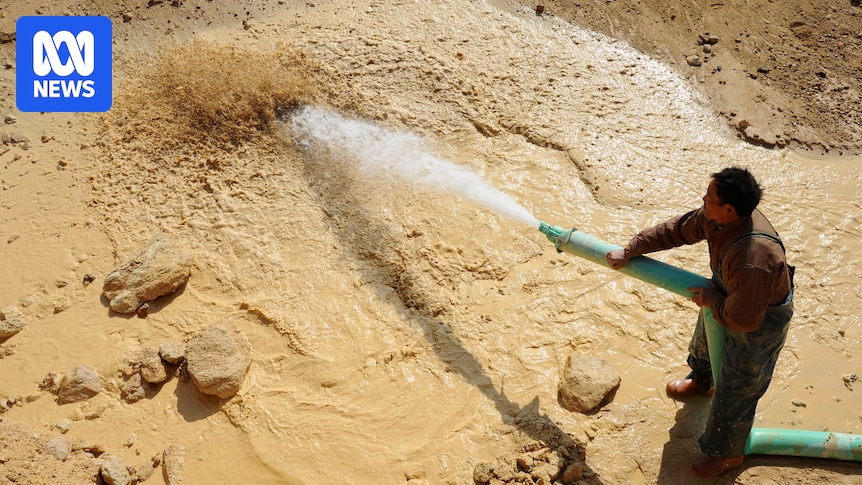
The 2025 “magnet shock” has raised critical questions about which countries will emerge as key players in the global supply of rare earth elements, essential for manufacturing permanent magnets. While Australia is often highlighted as a potential leader, its role is not as clear-cut as some might believe.
The situation echoes the 1973 oil crisis when an OPEC embargo against the United States led to a global economic upheaval. That crisis spurred the development of North Sea oil production as countries scrambled for alternative energy sources. Similarly, the recent Chinese embargo on rare earth exports has prompted a global race to secure these vital resources.
China’s Strategic Move and Global Repercussions
On April 4, 2025, China announced that exports of rare earth elements would require a license, effectively cutting off supply to the United States, especially for military applications. This move triggered widespread panic, given the critical role of rare earths in producing permanent magnets used in electric motors, weapon systems, electric vehicles, and robotics.
China’s strategy of underpricing rare earths over the years has allowed it to dominate the market, even forcing the shutdown of the Mountain Pass mine in California at one point. The recent embargo has underscored the vulnerability of global supply chains and the urgency for alternative sources.
Australia’s Strategic Partnership with the U.S.
In response to China’s embargo, the Trump administration quickly engaged with Australian officials, culminating in a meeting between Donald Trump and Australian Prime Minister Anthony Albanese. The two leaders signed the “United States-Australia Framework For Securing Supply in the Mining and Processing of Critical Minerals and Rare Earths.”
Prime Minister Albanese emphasized the economic benefits of this agreement, stating, “It means jobs in Australia, it means economic growth, it means more economic resilience.” However, the reality is more complex. While Australia has significant rare earth deposits, the challenge lies in refining these minerals into usable forms.
Expanding Global Partnerships
Meanwhile, the U.S. has been actively seeking partnerships beyond Australia. President Trump recently hosted officials from Uzbekistan, Kazakhstan, Kyrgyzstan, Tajikistan, and Turkmenistan, expressing a commitment to strengthening ties with these nations in the rare earths sector. Additionally, Mountain Pass in the U.S. and the Serra Verde mine in Brazil have resumed operations, with new projects underway in Angola and Tanzania.
“The key to rare earths is not mining them but refining them to an oxide which then gets sent to a smelter to turn into metal. At the moment, 90 per cent of the refining is done in China and the US is now desperately trying to do it itself.”
Australia’s Refining Capabilities and Future Prospects
Australia is making strides in refining rare earths, with two significant projects in development. Iluka Resources has commenced construction of a refinery at Eneabba in Western Australia, and Arafura Rare Earths is planning a facility near Alice Springs to process ore from the Nolans deposit. However, these projects are still years from full production.
Darryl Cuzzubbo, CEO of Arafura, noted that while Australia could theoretically produce magnets, it is unlikely. “Where Australia could play a role is processing to an oxide [which] represents 95 percent of the value chain of getting to a rare earths metal,” he explained. Australia could also leverage its resources as a strategic reserve to ensure supply to trading partners.
China’s Waning Leverage
Despite China’s current dominance, its leverage over rare earths is not expected to last indefinitely. As new mines and refineries come online globally, the market is likely to diversify. Cuzzubbo remarked, “China set themselves up to pull this card, but you can only pull it once, right?”
“As soon as you pull it, then you’ve just motivated these other global manufacturing powerhouses to solve the problem and that’s what they’ve done. They’ve pulled it, but they can only pull it once. They’re going to get maximum leverage.”
China’s temporary pause on the embargo, following discussions between Trump and President Xi Jinping, offers a brief reprieve. However, the long-term dynamics of the rare earths market remain uncertain.
Looking Ahead
As the world navigates the complexities of rare earth supply chains, Australia’s role will be crucial, though not singularly dominant. The country’s ability to refine and strategically manage its resources will determine its impact on the global stage.
The unfolding developments in rare earth production and refining will shape the geopolitical landscape, much like the oil crises of the past. While challenges remain, the global response to the 2025 magnet shock may ultimately lead to a more resilient and diversified supply chain for these critical materials.







